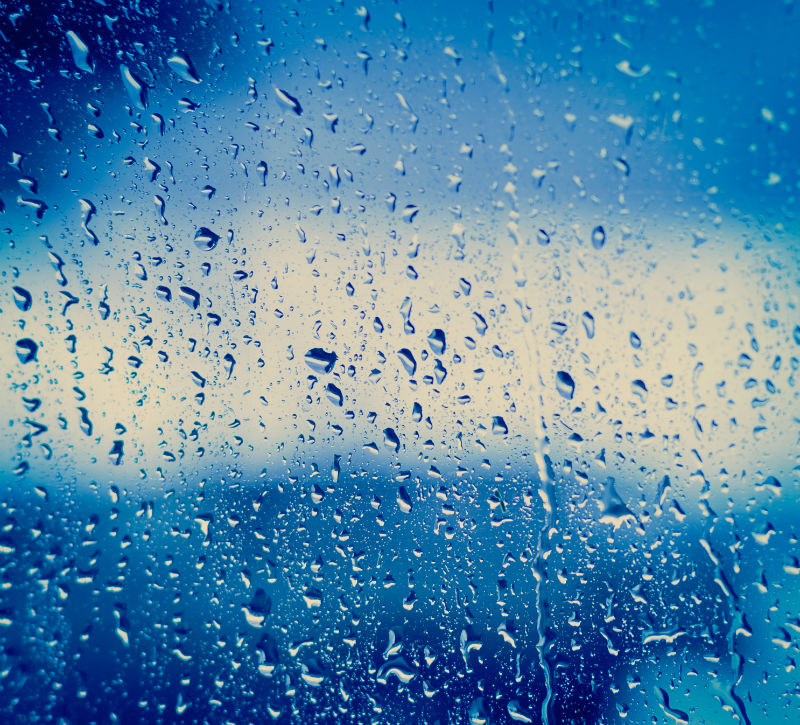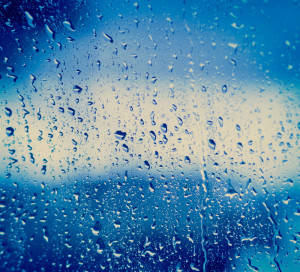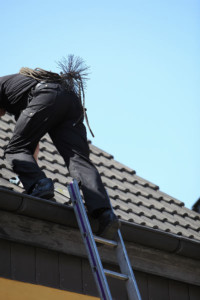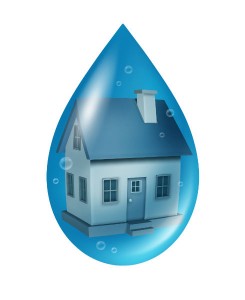Chimney Services » waterproofing your chimney
Our Company Blog

by Mike O'Mara | Dec 29, 2015 | Waterproofing
Here in the San Diego area, talk of the coming El Nino is a very hot topic. Since this weather event will bring more rain to our area, it is very important to be sure your chimney is in good condition. Even a small chimney leak can lead to major problems when heavy rains are in the forecast. At Weststar Chimney Sweeps, we take chimney leaks seriously for good reasons. The Chimney Safety Institute of America (CSIA) claims that water is the biggest enemy of masonry chimneys because of the amount of damage it can do. Water penetration can deteriorate your chimney so badly that it could be in danger of collapsing. This is why it is essential to ensure your chimney has no leaks before the arrival of El Nino. We would like to tell you more about the signs and causes of chimney leaks as well as a preventive service we provide to keep water from leaking into your chimney.
What are the signs of a chimney leak?
Sure signs of chimney leaks include peeling wallpaper, stains on the walls and ceilings, and dampness near your fireplace. You might even notice water standing in the bottom of your fireplace or stove. You can also see signs of chimney leaks on the exterior of your chimney. Cracked, broken, and missing bricks and pieces of mortar are the result of the damage of water penetration of your chimney. You may also notice rusting on your chimney cap and this also means water is leaking into your chimney.
What are the reasons behind chimney leaks?
Different things can cause chimney leaks. Most commonly, Weststar Chimney Sweeps finds chimney leaks that are caused by missing or damaged chimney caps. Cracked chimney crowns also lead to water penetration of a chimney. We have also found chimney leaks caused by damaged flashing systems and deteriorated bricks and mortar on the chimney structure. All of these problems can be solved by our CSIA-certified chimney technicians. We can install a new chimney cap to keep water, birds, and animals out of the chimney or repair cracks in chimney crowns. We can also repair damaged flashing and repoint bricks and mortar to replace the missing masonry materials.
How can Weststar Chimney Sweeps protect my chimney from water leaks?
We offer waterproofing services that can keep water from being absorbed into the bricks and mortar of your chimney. Using a formula that is 100% vapor permeable, we apply a layer of this formula to your entire chimney. Since this formula is vapor permeable, vapors and gases can still pass through the bricks and mortar and not become trapped within where they could cause even more damage. Waterproofing your chimney is an excellent way to prolong its life and to prevent water leaks from causing damage.
Ensure your chimney is in good condition before the arrival of El Nino. Contact us at Weststar Chimney Sweeps to schedule a chimney inspection, especially if you have noticed the signs of water leaks.
by Mike O'Mara | Jul 9, 2014 | Chimney Maintenance
Prevention is The Cure: Top 3 Chimney Repairs
It’s tough to manage and organize your own home. You have a handful of big and important decisions to make, plus a seemingly never-ending to-do list. You are not only concerned about the well-being and functionality of every aspect of your home, but you also need to think about the safety and security of you and your family.
This sentiment is doubled when homeowners have chimneys in their home. Based on our years of experience here at Weststar Chimney Sweeps, we know what you need to do to optimize performance and safety.

Over the course of your home’s life, your chimney will likely need repair. Here are three of the most common.
To help you further, here are the top 3 parts of the chimney that are usually subjected to repair:
As its name suggests, the chimney crown is located at the top most portion of the chimney. The chimney crown’s main function is that it covers the chimney to prevent moisture from filtering down in the stone or brick walls. Basically, it protects the mortar, which in turn holds everything in place. This part of the chimney is constantly subjected to drastic changes in weather and temperature so with time, the chimney crown may have cracks and leaks that may cause varying degrees of problems.
According to the Chimney Safety Institute of America a chimney liner is a; “clay, ceramic or metal conduit intended to contain the combustion products and direct them to the outside atmosphere”. So basically, your chimney liner not only protects you, your family and your home from the harmful products of combustion and burning, it also protects your chimney and allows it to last longer.
Flashing is done to ensure that your chimney is waterproof and safe. Flashing is basically a sheet of metal which consists of two panel parts. These are installed to make sure that the area where the chimney meets the roof of your home is watertight and safe.
To know your chimney and to avoid huge damages, you need to understand how each part of your chimney works. You need to have an idea what each part is for to see their importance. Once you get to grasp that, you’d be more careful and mindful of your chimney as a whole.
by Mike O'Mara | Mar 25, 2014 | Chimney Maintenance
Spring: A Fresh Start for Your Chimney
You’ve done an excellent job in taking good care of your chimney during winter, but no matter how cautious you’ve been, there might still be things that happen inside the chimney that are just beyond your control. Winter might have left some damages behind that need to be inspected and fixed and have to be attended to right away. Our Chimney Safety Institute of America (CSIA) certified chimney sweeps from Weststar Chimney Sweeps would like to put your mind at ease.

Chimney cleanings and inspections are not DIY projects. Let the certified professionals put your fears to rest.
Parts & Systems
There are certain parts of the chimney which are vital in directing the smoke out the right way; parts like the:
- Flue
- Flue liner
- Damper
- Smoke Chamber
These parts help create draft inside the chimney. However, these are also the parts that are most prone to creosote buildup or other obstructions making it harder for smoke to go out. This opens doors to a lot of problems that will not only cost thousands in repairs, but may even cost you something more valuable—your health or even your life.
What to do
To prevent objects from entering the chimney, it’s best to have a chimney cap installed so that the inside of your chimney is protected from all the dangers that the outside world can bring. Some examples are animals, debris, spider webs and leaves.
Then there is water. This is one of the things chimneys hate the most because it destroys it—the performance and the structure. It can cause the brick walls to deteriorate. This problem can be prevented by waterproofing the chimney and repairing the flashing. We also make it a point to include the chimney crown in the inspection and repairs because when it is cracked, this can also be another entry point for water. These measures will help prolong the life of your chimney.
Even if you don’t use your chimney during spring, it’s best to keep animals and water out. Remember, it’s not just to prepare for the next winter season, we want to make sure that your chimney continues to be efficient for many years to come. Let us help keep your heating system in tip-top shape.
by Mike O'Mara | Sep 29, 2013 | Chimney Maintenance
Water Leaks In the Chimney Are Never Good!
When most people think about problems that could occur with their chimney, they imagine animals moving in or leaves preventing proper ventilation. What they do not consider is what might happen if excessive amounts of water accumulate within the chimney. In fact, water leaks in the chimney can present some of the most dangerous situations in a chimney. Every homeowner should be aware of the risks and make sure that their chimney is safe and dry. And if there is water making its way in, we can repair it.

A properly installed chimney cap and fitted flashing goes a long way toward waterproofing your chimney.
When the chimney becomes wet, it will quickly weaken and begin to crumble. Homeowners should keep in mind that this is true not only of a masonry fireplace but also of a prefabricated model. Once it starts to crumble, it is only a matter of time before the fireplace starts to collapse. This damage can quickly spread and cause structural damage to the home that will go much father than the fireplace.
Another thing to keep in mind when water enters the chimney is that it will freeze and melt along with the weather. This means that the material in the chimney will expand and contract each time. The result will be cracks in the chimney, which not only compromise the stability of the structure but can cause a great deal of other dangers. This is often the condition that starts a domino effect of dangerous chimney issues.
Once there are cracks in the chimney, the heat barrier is not as effective as it should be. This means that the structure of the home is getting much hotter than it should. In addition, it means that combustible gasses travel into the home instead of leaving the way that they should. The result is a dangerous combination of circumstances that can very quickly turn into a devastating house fire.
In many cases, moisture gets into the chimney becomes there are problems with the flue liner. Older homes may not have liners at all and, if this is the case, one needs to be installed before the fireplace is used again. Metal liners tend to hold up better than clay or tile models but even they are not foolproof if they are not installed properly. It is imperative that there are no spaces at all between the flue liner and the actual wall of the chimney. Even the smallest space could allow water in, starting a whole host of problems.
The problem is that the average homeowner has no way of knowing when there is water inside of their chimney. Installing a chimney cap is a great way to avoid many of these issues because it keeps rain and snow out of the chimney. However, it is still important to have a certified chimney sweep inspect the chimney each year. They will be able to tell easily if there is a problem with the liner or if water is entering the chimney in any other way. This should be done every year, either at the beginning or end of the fireplace season.
There are many issues that can arise with a chimney, which is why proper chimney maintenance is so important. Water in the chimney may not seem like a big deal but it can actually be the start of many problems. The result may be significant structural damage to the home or even a house fire. To avoid these issues, install a chimney cap and have the chimney professionally inspected each year.





